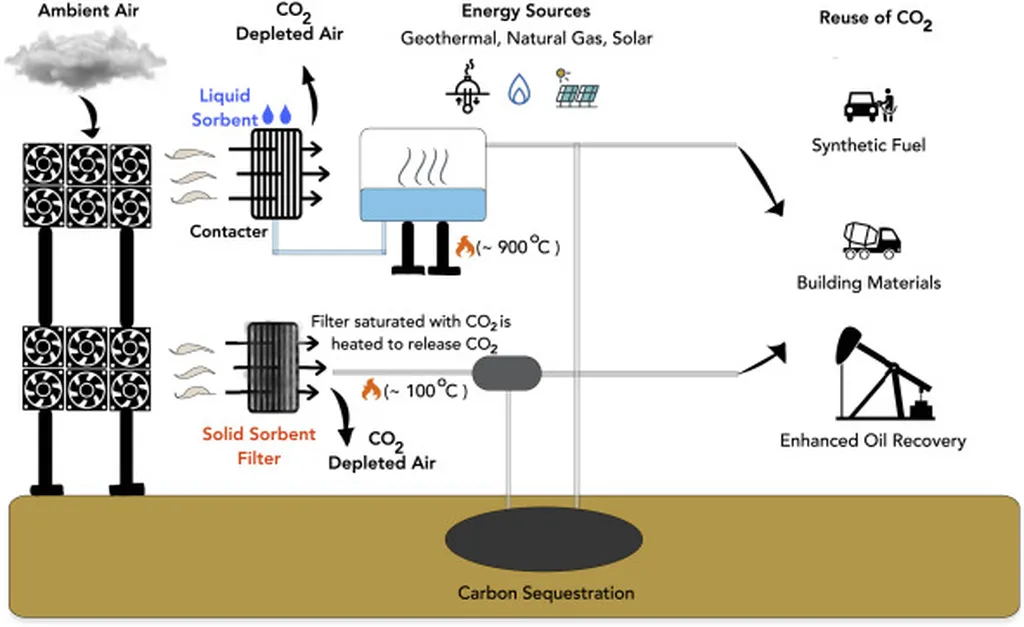Researchers from Arizona State University, led by Klaus Lackner and Wim Vermaas, have developed a novel approach to direct air capture (DAC) of carbon dioxide (CO2) that leverages moisture to drive the process. This innovative system could have significant implications for the energy sector, particularly in carbon capture and utilization (CCU) and carbon sequestration efforts.
The team designed and demonstrated a moisture-driven DAC system that delivers CO2 into an aqueous medium. In laboratory settings, the system captured approximately 1 gram of CO2 per day, while a small pilot-scale system operated outdoors captured around 100 grams daily. The key innovation lies in the use of elongated mesh tube packets containing AER beads with a high surface area, which enhances air contact and reduces drying and CO2 loading time by about four times compared to larger mesh bags.
The practical applications of this technology are broad. Beyond cultivating photosynthetic microbes, the captured CO2 can be used in the food and beverage industry, converted into fuels and chemicals, or sequestered to mitigate climate change. The researchers conducted a techno-economic assessment, estimating the current cost at $670 per tonne of CO2 to capture into an alkaline solution and an additional $280 per tonne to extract, purify, and compress the CO2 to 15 MPa for sequestration.
Looking ahead, the team modeled an aspirational scenario with improved sorbents capable of capturing 4 mmol of CO2 per gram and a water uptake of 50 weight percent. This enhancement could reduce the cost to $51 per tonne for capture and $109 per tonne for processing and compression, making the technology more economically viable. Life cycle analysis revealed that the moisture-driven process uses up to 87% less energy than traditional thermal and vacuum swing DAC methods by utilizing energy from water evaporation. However, the current system uses about 33 times more water than the thermodynamic limit, highlighting the need for future research to increase sorbent hydrophobicity while maintaining and improving ion exchange capacity.
This research, published in the journal Nature Climate Change, represents a significant step forward in the development of efficient and cost-effective carbon capture technologies, with potential benefits for the energy industry and beyond.
This article is based on research available at arXiv.

